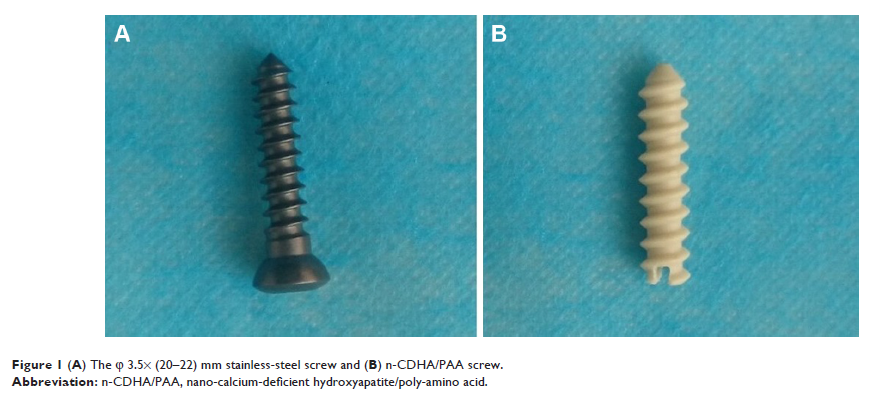108384
论文已发表
注册即可获取德孚的最新动态
IF 收录期刊
- 3.4 Breast Cancer (Dove Med Press)
- 3.2 Clin Epidemiol
- 2.6 Cancer Manag Res
- 2.9 Infect Drug Resist
- 3.7 Clin Interv Aging
- 5.1 Drug Des Dev Ther
- 3.1 Int J Chronic Obstr
- 6.6 Int J Nanomed
- 2.6 Int J Women's Health
- 2.9 Neuropsych Dis Treat
- 2.8 OncoTargets Ther
- 2.0 Patient Prefer Adher
- 2.2 Ther Clin Risk Manag
- 2.5 J Pain Res
- 3.0 Diabet Metab Synd Ob
- 3.2 Psychol Res Behav Ma
- 3.4 Nat Sci Sleep
- 1.8 Pharmgenomics Pers Med
- 2.0 Risk Manag Healthc Policy
- 4.1 J Inflamm Res
- 2.0 Int J Gen Med
- 3.4 J Hepatocell Carcinoma
- 3.0 J Asthma Allergy
- 2.2 Clin Cosmet Investig Dermatol
- 2.4 J Multidiscip Healthc

缺钙纳米羟基磷灰石/聚氨基酸复合螺钉治疗兔关节内骨折的内固定效果评价
Authors Dai Z, Li Y, Yan Y, Wan R, Ran Q, Lu W, Qiao B, Li H
Received 7 May 2018
Accepted for publication 31 August 2018
Published 18 October 2018 Volume 2018:13 Pages 6625—6636
DOI https://doi.org/10.2147/IJN.S173358
Checked for plagiarism Yes
Review by Single-blind
Peer reviewers approved by Dr Govarthanan Muthusamy
Peer reviewer comments 4
Editor who approved publication: Dr Linlin Sun
Objective: To evaluate the internal fixation effect of nano-calcium-deficient
hydroxyapatite/poly-amino acid (n-CDHA/PAA) composite screws in the
intraarticular fracture model.
Materials and methods: A total of 35 New Zealand White rabbits were
used in a bilateral femoral intercondylar fracture model and randomly divided
into two groups. n-CDHA/PAA screws were used in the experimental group, and
medical metal screws were used in the control group. The fracture condition,
range of motion, and the screw push-out strength were assessed, and an
arthroscopic examination of knee joint was performed at 4, 8, and 12 weeks
after surgery. The biodegradation of the n-CDHA/PAA screws in vivo was tested
through weighing, and changes in screw structure were assessed by X-ray
diffraction at 12 weeks after surgery.
Results: The general situation of all animals was good
and showed no incision infection and dehiscence after surgery. X-ray scanning
showed that significant callus growth was present in both groups at 4 weeks
after surgery, and there was no significant difference (P >0.05) in the Lane-Sandhu
score between the experimental and control groups at all time points after
surgery. There were no statistically significant differences (P >0.05) in the range of motion
and Oswestry Arthroscopy Score of arthroscopic examination of the knee joints
between the two groups. The screw push-out strength of the control group was
stronger than that of the experimental group at 4 weeks after surgery (P <0.05), but after that, there
was no significant difference between the groups (P >0.05).
The degradation tests showed that the n-CDHA/PAA screws degraded gradually
after implantation, and the weight loss rate was approximately 16% at 12 weeks
after surgery. The X-ray diffraction results showed that the crystal structure
of the outer surface of the n-CDHA/PAA screw has changed at 12 weeks after
surgery.
Conclusion: The n-CDHA/PAA screw is an effective and safe
implant as a potential internal fixation device for an intercondylar fracture
of the femur, and its internal fixation effect was similar to that of medical
metal screw.
Keywords: n-CDHA/PAA
screw, internal fixation, intraarticular fracture, biocompatibility,
bioactivity
